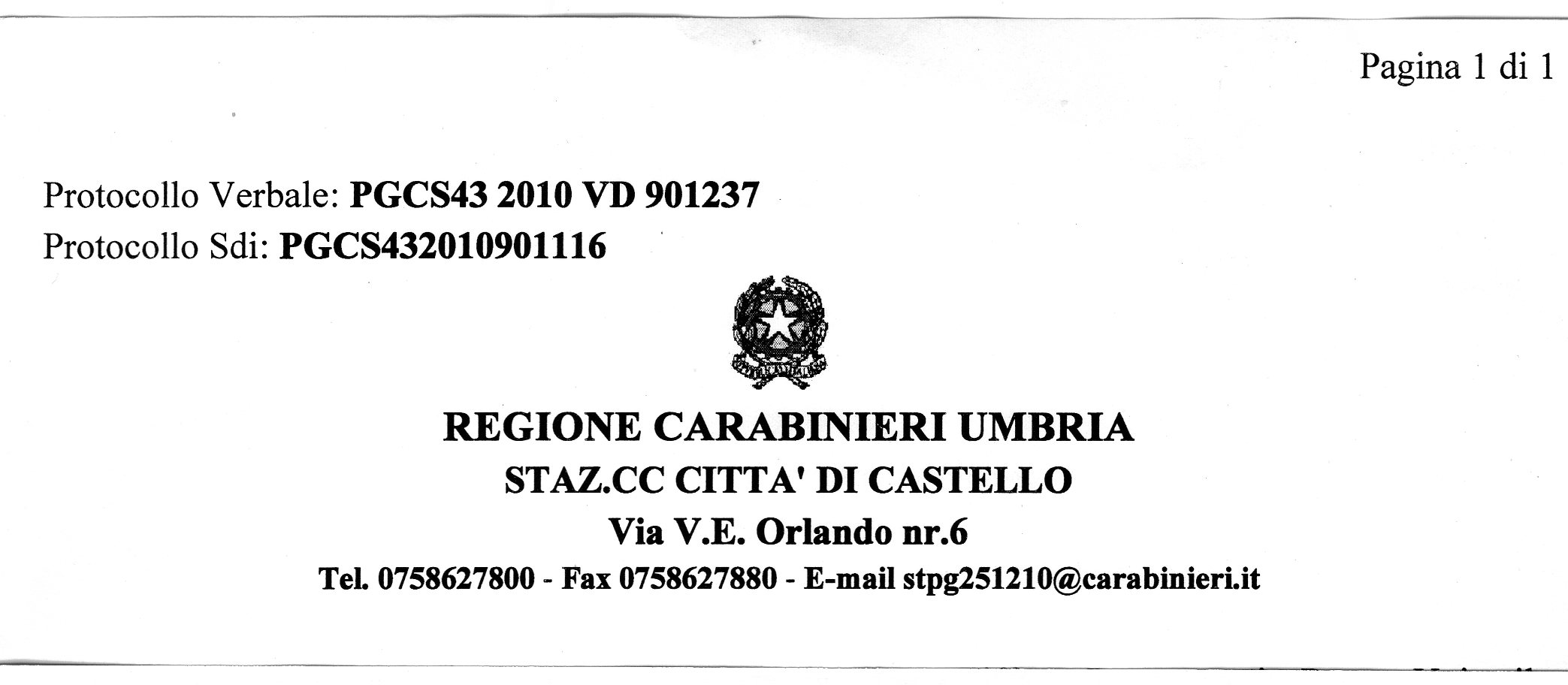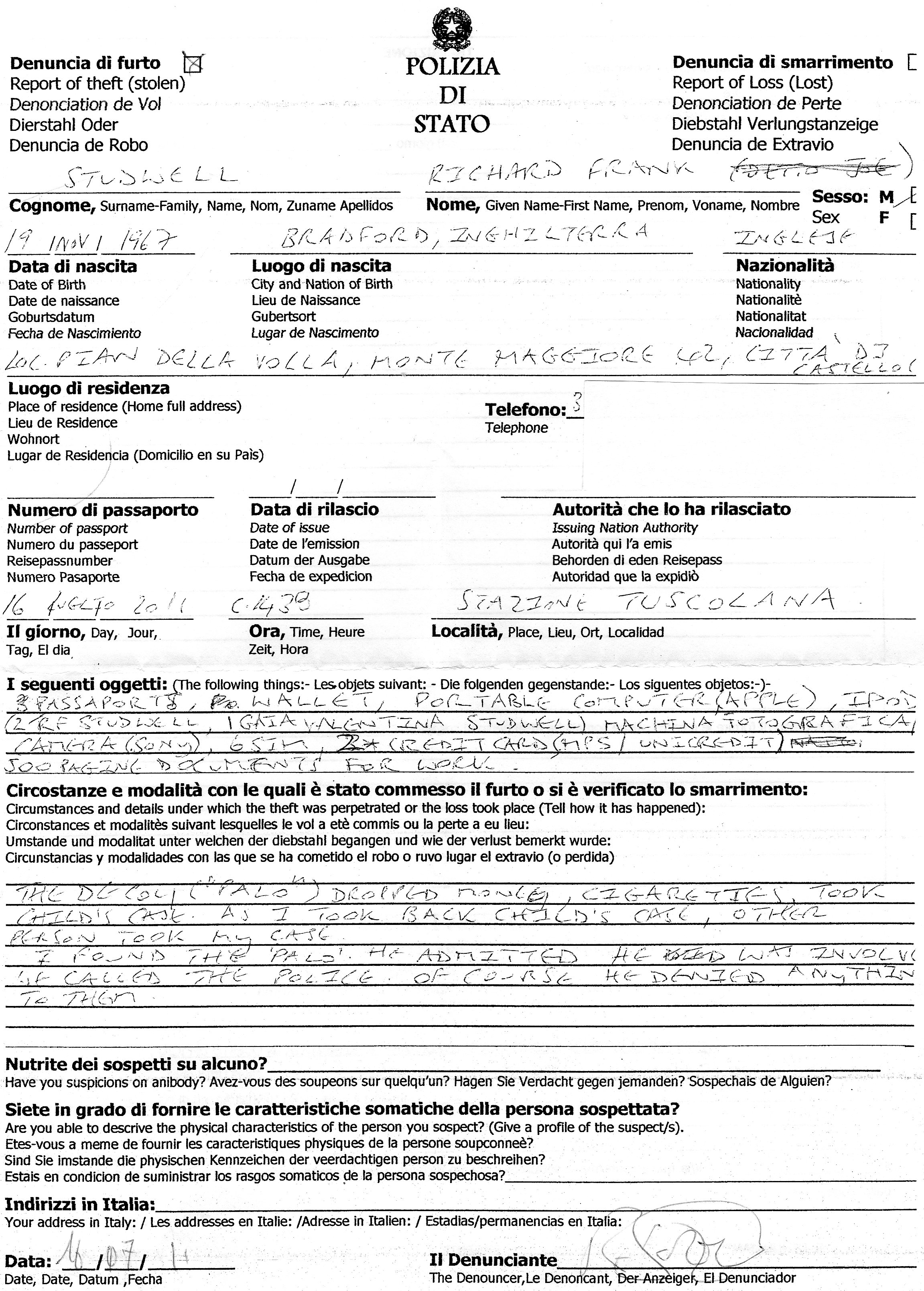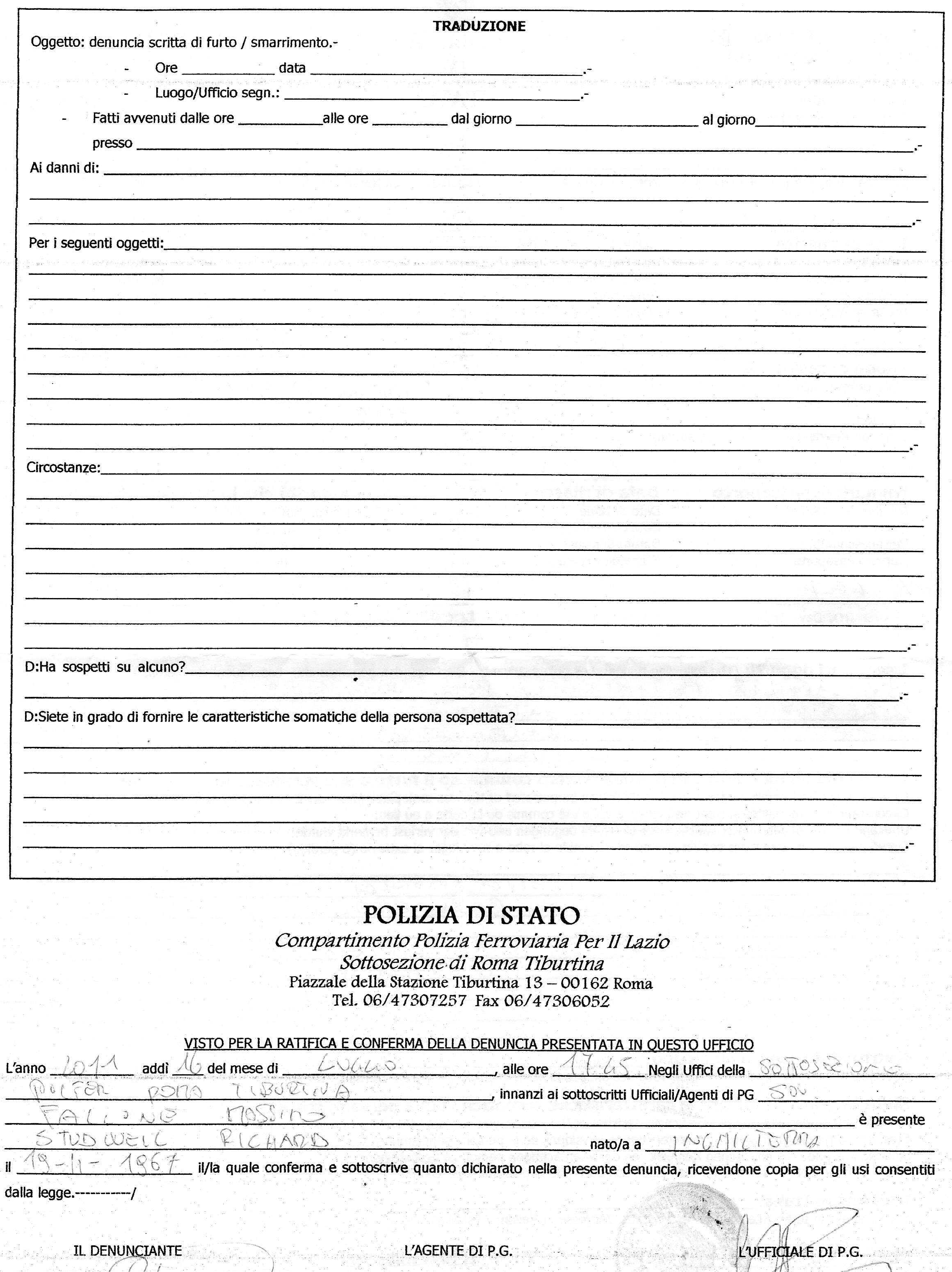The conviction of Raffaele Sollecito and Amanda Knox for, amongst other things, murder, in Perugia highlights a simple, cultural question: how do you like your theories – straight-up conspiracy, or otherwise? Because, it seems to me, you need to be a conspiracy junky to go for this one.
Despite a trial of 11 months, the basic issues of this case do not appear to be hugely complicated. First up, remember that the trial took 11 months largely because it only sat for, at most, two half days a week, and that the whole thing was stopped for two months because it was, err, the summer. If the court had concentrated full-time, Monday to Friday, on this case, and not skipped off to the seaside or wherever, a rough calculation suggests it would have been done in around 10 weeks. One point of view I completely disagree with is this, quoted from one Michele Ainis, who is cited as an expert in Italian constitutional law in The New York Times: ‘It’s true that the longer the trial,’ he says, ‘the longer the pain, but it also means that there can be an in-depth analysis of the facts.’ This conflates the kind of time wasting and dicking around that goes on in the Italian court system with a higher form of investigation. The truth, surely, is that this case reminds us of just how dangerous the Italian ‘part-time’ approach to legal cases may be.
So to the basic issues. There is a crime scene, the location of which – to my knowledge – no one disputes. It is the room of the murdered student Meredith Kercher, where her dead body was found. One person is tied to the crime scene by heavy forensic evidence – finger-prints, a bloody hand-print, and DNA. This is Rudy Guede, already sentenced to 30 years for Kercher’s murder in an earlier trial. There was no conspiracy theory about Guede. He was found because his prints and DNA were at the scene, and the police located him in their database (he already had a police record). When they went looking for Guede a couple of weeks after the murder, they discovered that he had fled from Italy to Germany.
Sollecito and Knox were not brought into the case because police found clear forensic evidence and then went looking for them. They were brought into the case because police and the investigating magistrate became suspicious of them, and then went looking for evidence. Perhaps critically, the authorities decided that Sollecito and Knox were involved before it was clear that prints and DNA at the scene belonged to Guede. Subsequently, the prosecution case became that all three persons were responsible for the murder.
So what evidence is there that Sollecito and Knox were present at the crime scene? There was no forensic evidence presented in the case to show that Knox had been in the room – no prints, no DNA, nothing. With respect to Sollecito, the prosecution said that traces of his DNA were found on a bra clasp belonging to Kercher which police bagged on a return visit to the crime scene 46 days after the murder. There was no other Sollecito DNA found in the room, including on the rest of the bra, and no prints. Despite this lack of forensic evidence, the prosecution made a case that Kercher was killed at the end of a violent sex game involving Guede, Sollecito and Knox. Perhaps you see now what I mean about one’s propensity for conspiracy theories. In order for this to be possible, Sollecito and Knox must have been present at the crime scene in such as way as to leave Guede’s forensic detritus all over the place and yet remove all of their own prints and DNA except for a bit of Sollecito’s on a bra clasp. How? The two explanations I can think of are a) that Sollecito and Knox took part in a sex game dressed in some kind of protective forensive overalls while Guede didn’t, or b) that afterwards Sollecito and Knox selectively cleaned up only evidence of themselves, leaving Guede’s intact, using some kind of finger print and DNA differentiator machine they happened to have about their persons.
This is not terribly compelling. Apart from the bra clasp (whose belated discovery points most obviously to shocking standards of police work), only two other bits of forensic evidence were presented against Sollecito and Knox. In a communal bathroom, where some drops of Kercher’s blood were found, there was Knox’s DNA. Given that Knox says she took a shower in the room the morning after the murder and noticed the blood, this hardly seems damning. Finally there is a tiny trace of what prosecutors claim is Kercher’s DNA on a knife at Sollecito’s apartment. This would be of real interest, except that the trace is so minute that independent experts say that it cannot be relied on (and indeed would not be admitted in many jurisdictions). Moreover, this knife is a possible fit for only one of three major wounds on Kercher’s body.
Given the paucity of forensic evidence against Sollecito and Knox, as opposed to the very substantial amount against Guede, most people, I suspect, would want to hear a compelling case for the motivation of the first two. After the chief prosecutor’s intimations of a cult killing (oh yes), about which I blogged back in February 2009, were knocked back, the prosecution had nothing more substantive to offer. The prosecutiing team switched, without any hard evidence, to an argument that Knox, orchestrating the murder, was driven by hatred of Kercher. As this line was pursued, the presiding judge, Giancarlo Massei, allowed both hearsay and subjective assessment to be offered in court. Chief prosecutor Mignini, for instance, told the court (referencing some missing money): ‘We do not know with certainty what intentions they [Guede, Sollecito, Knox, at the onset of their alleged murderous sex game] may have had. But it is possible that there was an argument, which then degenerated, between Mez [Meredith] and Amanda over the money that disappeared. Or perhaps the British student was upset by Guede’s presence.’
It is possible that horoscopes are based in scientific fact, that farting in Denmark can cause earthquakes in Japan, and that my dog can sing in Welsh. Nonetheless, such claims are not normally admissible in court without a demonstrable basis in fact. Here, for the record, are Mignini’s above remarks in the original Italian: ‘Non sappiamo con certezza [I suspect a logician or a philosopher might translate this as: ‘We have no clue’] che intenzioni avessero, ma è possibile che ci sia stata una discussione, poi degenerata, tra Mez e Amanda per i soldi scomparsi. O forse la studentessa inglese era contrariata per la presenza di Guede.’ Whatever the intention, said Mignini, group leader Knox, ‘voleva vendicarsi di quella smorfiosa troppo seria e morigerata per i suoi gusti’. So Knox led Sollecito, whom she had known for six days, and Guede, whom she barely knew, in a violent sex game which left no trace of her presence at the crime scene and ended in Kercher’s murder.
The question one asks next is how could a jury convict based on the evidence presented? We do not know and we should not speculate. Within 90 days the presiding judge will publish some kind of explanation. For now, however, it may be worth reflecting on what I understand to have been the methodology behind the jury’s decision.
In a British court, a judge provides direction to jurors (about things that must be considered, things which may not be considered), before they retire to consider their verdict. Moreover, jurors are ‘sequestered’, which means that they should not have been reading newspapers, watching television news, discussing the case with members of the public, and so on; they are supposed to concentrate exclusively on the case, which runs each working day until it ends.
A British judge’s direction to jurors is important and is frequently shown to have played a role in miscarriages of justice. The direction, however, is given in front of the court and the public. In a case such as that of Sollecito and Knox in Italy – as I understand it – it is two ‘professional’ jurors (i.e. members of the legal establishment) who sum up the evidence, and provide guidance as to what is most important, to six lay jurors in camera. Personally, I am at a loss as to what jurisprudential benefit this can offer. It means there is no clear public record of the direction that is provided. And it means that the lay jurors never escape from the paternal oversight of the court apparatus. This seems to me another example of the deference to the supposed expert with which Italy is plagued — rule by what in previous blogs I have termed a ‘bureaucratic aristocracy’. Myself, I would be much happier placing more trust in ordinary people. That is not the Italian way, despite – in my view – the daily evidence that it is this country’s professional classes that represent not its greatest asset but its biggest problem.
This brings us to the family of the murdered girl. After the verdicts, Kercher family members gave a press conference and made two points. The first is that in a situation like this you have to trust ‘the system’; the second is that they now have a decision and hence some kind of closure. Although I sympathise profoundly, I disagree with both these points. On the first, I know of no legal system in the world that has not produced miscarriages of justice; in the UK I followed some of these, professionally, in the distant past as a journalist. Given (for a rich country) the extreme institutional weakness of Italy, there is no case for blindly trusting the system here. The system can work in Italy, but it is reasonable to be more sceptical that it will than in most other OECD countries. On the second point, I suspect that within days of the verdicts (if not already) the Kerchers will realise these verdicts bring no closure, because the Italian justice system does not really do closure. Appeals are granted almost automatically. Moreover, as defence lawyers have been quick to note, the verdicts in this case of themselves demand appeals. With the conspiracy theory accepted, Guede is not alleged to have delivered the fatal blows, and yet has gone down for 30 years. Sollecito and Knox (the latter deemed to have delivered the mortal blow) have been given sentences of 25 and 26 years respectively. These are not the life (ergastolo) terms that the alleged crime would warrant. The sentences are inconsistent, almost made to be appealed. Indeed they look to some observers like ‘get me out of here and make this somebody else’s problem’ sentences on the part of the jury. And that is exactly what will happen in a process as likely to prolong as to curtail the suffering of Meredith Kercher’s family and friends.
On this question, here is something that I read in the Corriere della Sera: ‘Per la giuria popolare [i.e. the lay jurors] non è stata una decisione facile: condannare due ragazzi di 25 e 22 anni all’ergastolo sarebbe stato distruggere per sempre la loro vita; assolverli avrebbe significato sconfessare non solo l’intera inchiesta ma anche i giudici che prima di loro si sono espressi. Ed è arrivata una condanna a metà.’ Well, you said it, not me. If you don’t read Italian, what the newspaper appears to be suggesting is that Sollecito and Knox’s sentences were a compromise between embarrassing the court and the prosecution, and condemning the two to life in prison, which would be consistent with Guede’s term.
Separately, it is notable how upleasantly politicised this trial has become at the international level. This can only get worse. Knox is American, and various Americans are alleging anti-Americanism. I cannot see the evidence for this. Sollecito is Italian and he has gone down too. What is at issue here is the institutional weaknesses of Italian justice and the particular facts of the Perugia trial, not some assault on Uncle Sam. Moreover, Americans need to be a little careful about getting on their high horse over Italian justice. Theirs, after all, is the first country I am aware of to imprison fully one percent of its population, in an approach to law and order that most Europeans find despicable. This failure is not generally one of institutional shortcomings, but instead of a tolerance for levels of inequality and general ‘unfairness’ in society that are not present in Europe. Nonetheless, miscarriages of justice, as I said earlier, occur in all jurisdictions. The last case I paid any attention to before this one was OJ Simpson…
Those sceptical of the verdicts that have been handed down in Perugia need to remain closely focused. At the same time, I think Knox’s family is absolutely right to attract as much publicity as possible to the case. When confronted with institutional failure, as I have seen again and again in developing countries in Asia, it is essential to maintain the glare of public attention. This is the main way in which institutionally weak societies are compelled to confront their failings. The international noise needs to be loud, but not shrill.
Finally, finally, here is my reminder of the ways to create the kind of mess that this case represents: 1. lousy police work; the handling of the forensics in Perugia has been shoddy and yet the outcome of the case has rested largely on forensic evidence 2. A ‘professional’ class which sets its example by not following the rules. This is a society where policemen don’t wear seatbelts, park how they like, etc. In this case we have seen the judicial equivalent: despite rules which say that the findings of police investigations are secret until prosecutors ask for an indictment, in Perugia (as in almost all high-profile cases in Italy) there have been relentless leaks to the press from the outset. If the police and the magistracy leak information in contravention of basic rules of procedure, what reasonable expectation can there be for other people’s behaviour? Italian primary school teachers (thankfully) seem to understand that their job is about setting the right example, but not the rest of the Italian professional class.
Links of interest:
A New York Times op-ed lets rip (but forgets about all those incarcerated Americans) before the verdicts are announced.
From the Guardian’s generally excellent John Hooper, first a timeline for the murder and a guide to how weak forensic and circumstantial evidence might suggest that Sollecito and Knox were involved.
Then Hooper’s review of questions raised about the Italian legal system and a discussion of questions of ‘face’ in Italy (something familiar to any student of China). Note that this story is filed after the one above and Hooper’s view, given more time for reflection, seems much more sceptical of the court’s decision. (I raise this point merely to remind readers of the pressures that serious journalists face, writing about complex issues to deadline.)
Video
Final statements to court. Personally, I am not convinced these statements reflect the greatest legal advice. Sollecito reads a rather anodyne prepared statement, with just a few (presumably huge) words on each page, and looks stilted. Knox attempts some kind of sucking up to the court, thanking jurors and prosecution for doing their job. If I had been subject to the kind of investigation, detention and character assassination witnessed in this trial, I would not have been thanking anyone.
Email, Print, TwittyFace this post:
Like this:
Like Loading...




